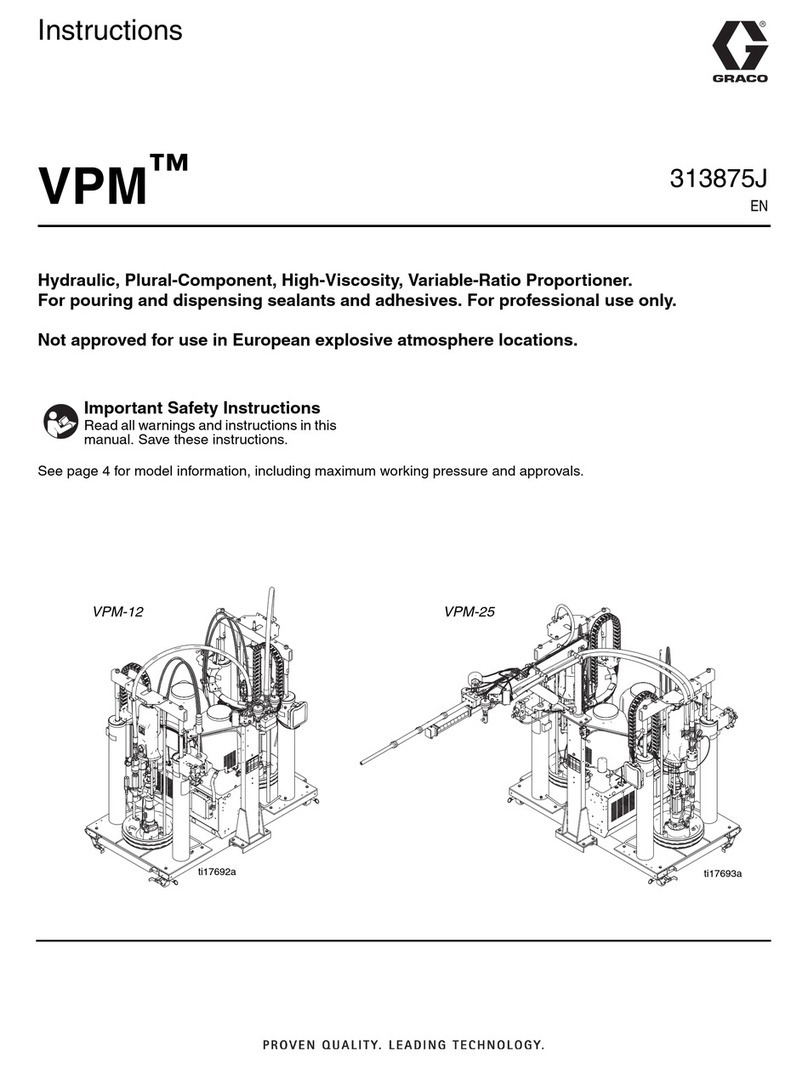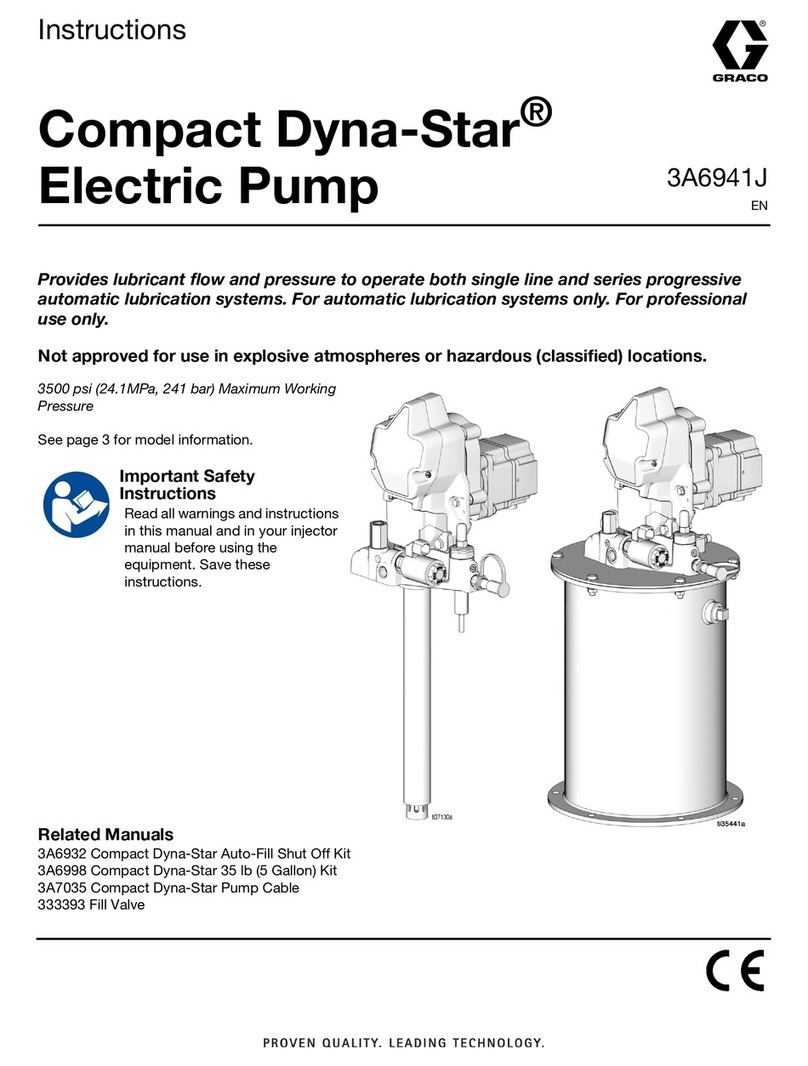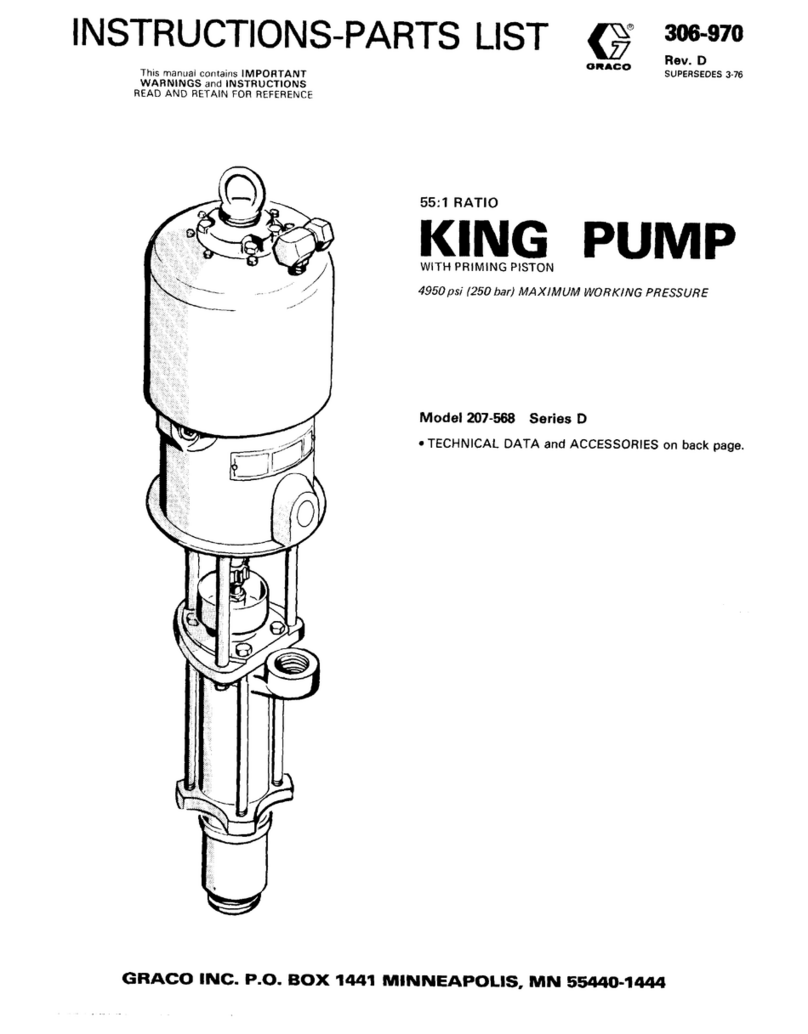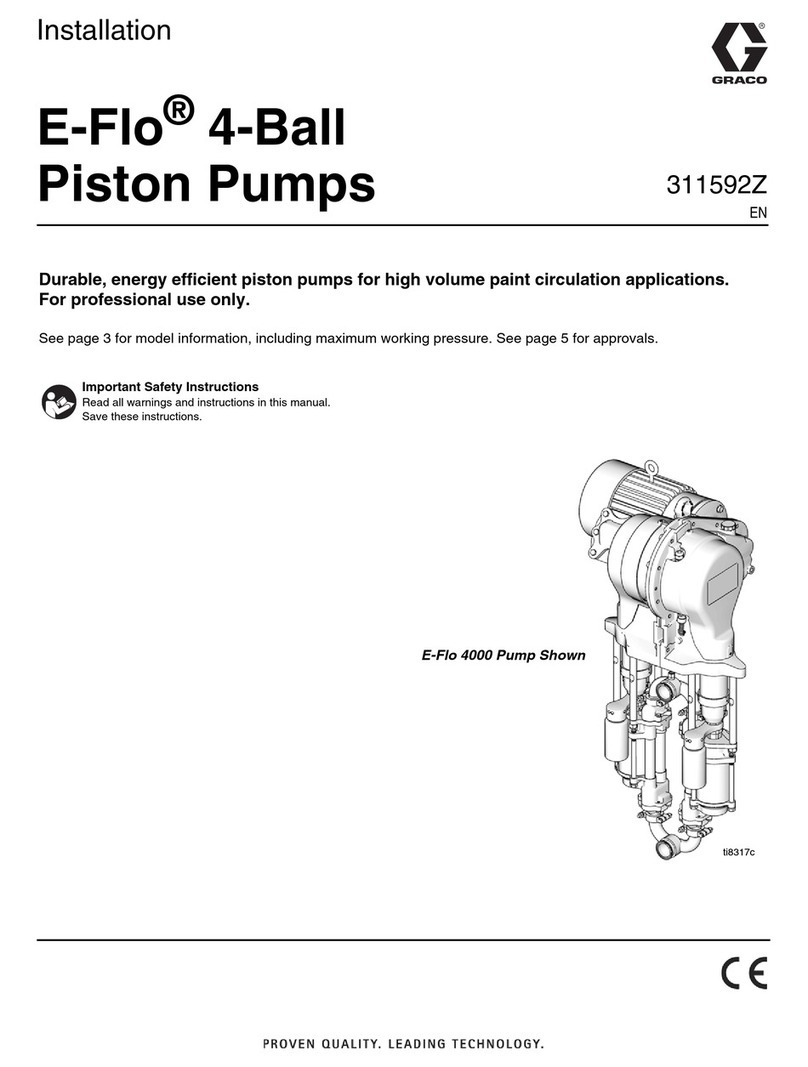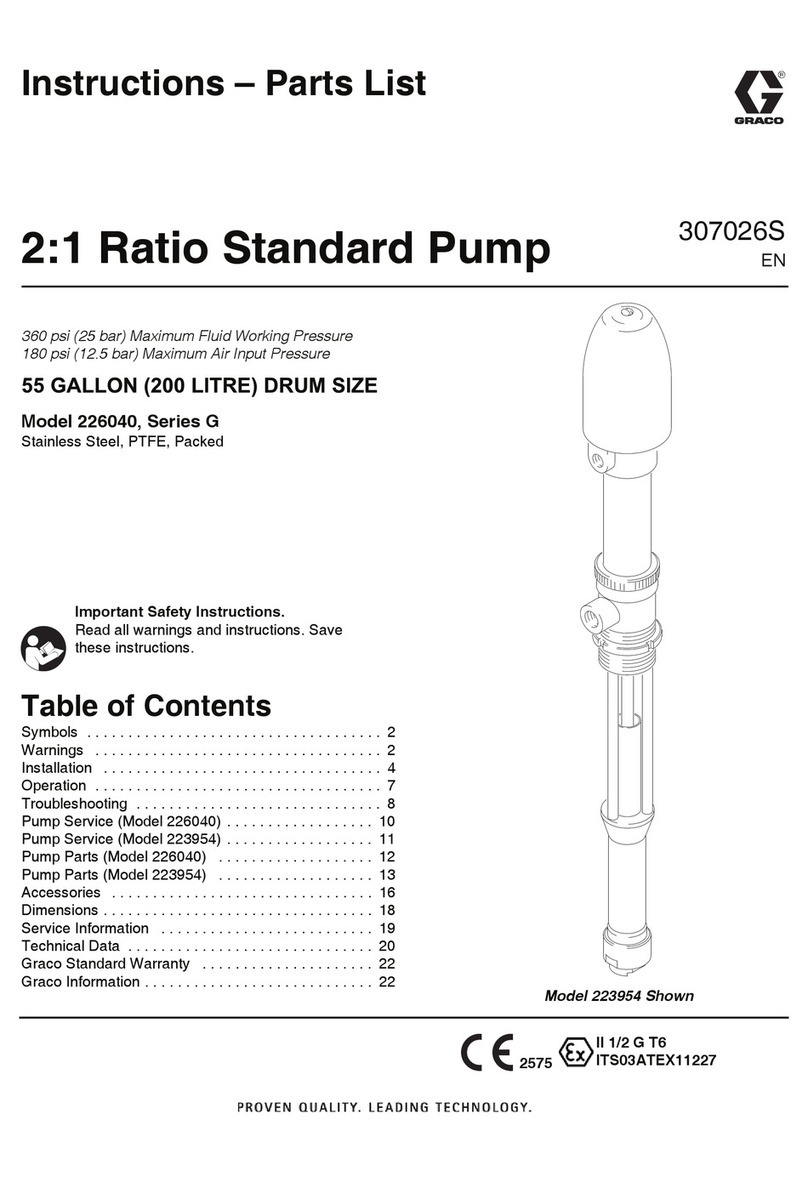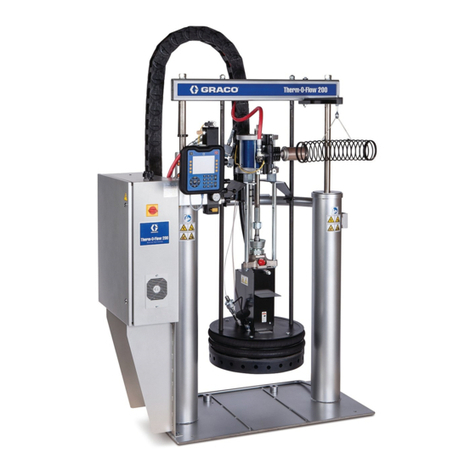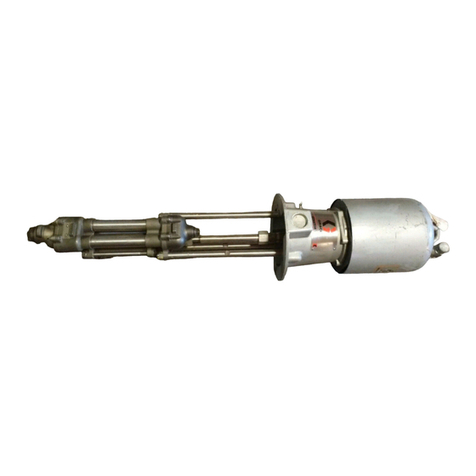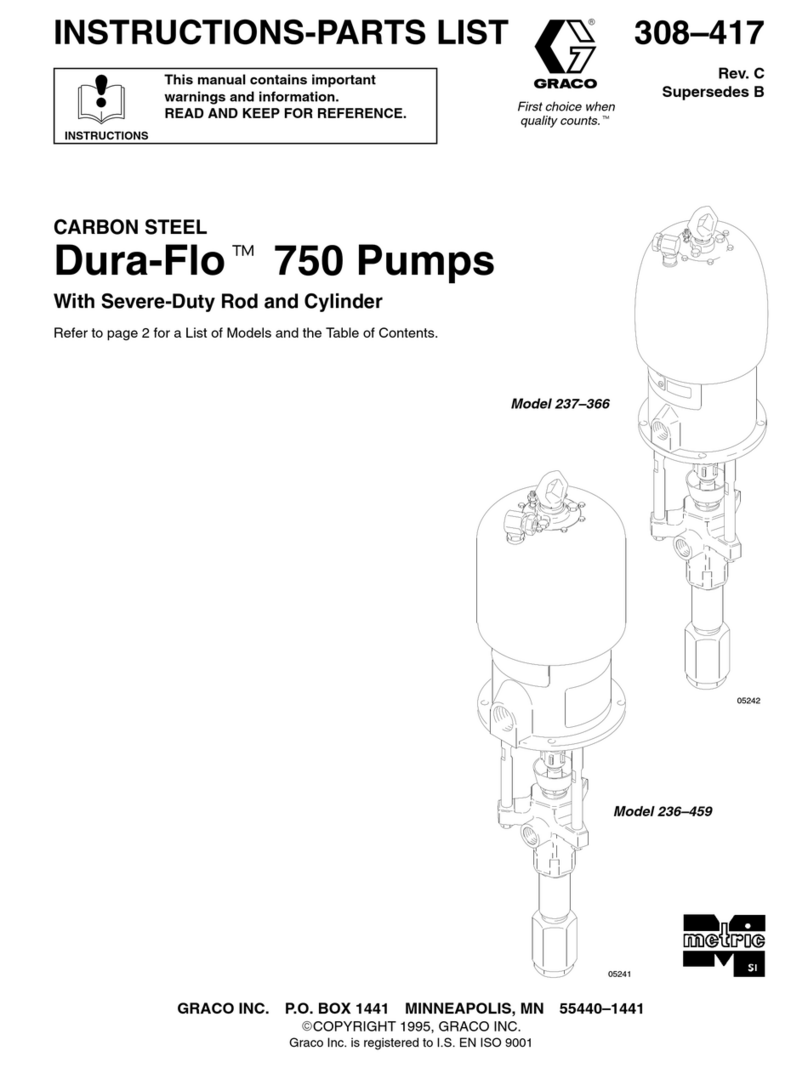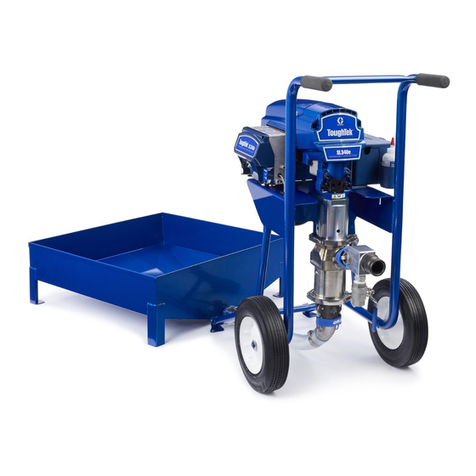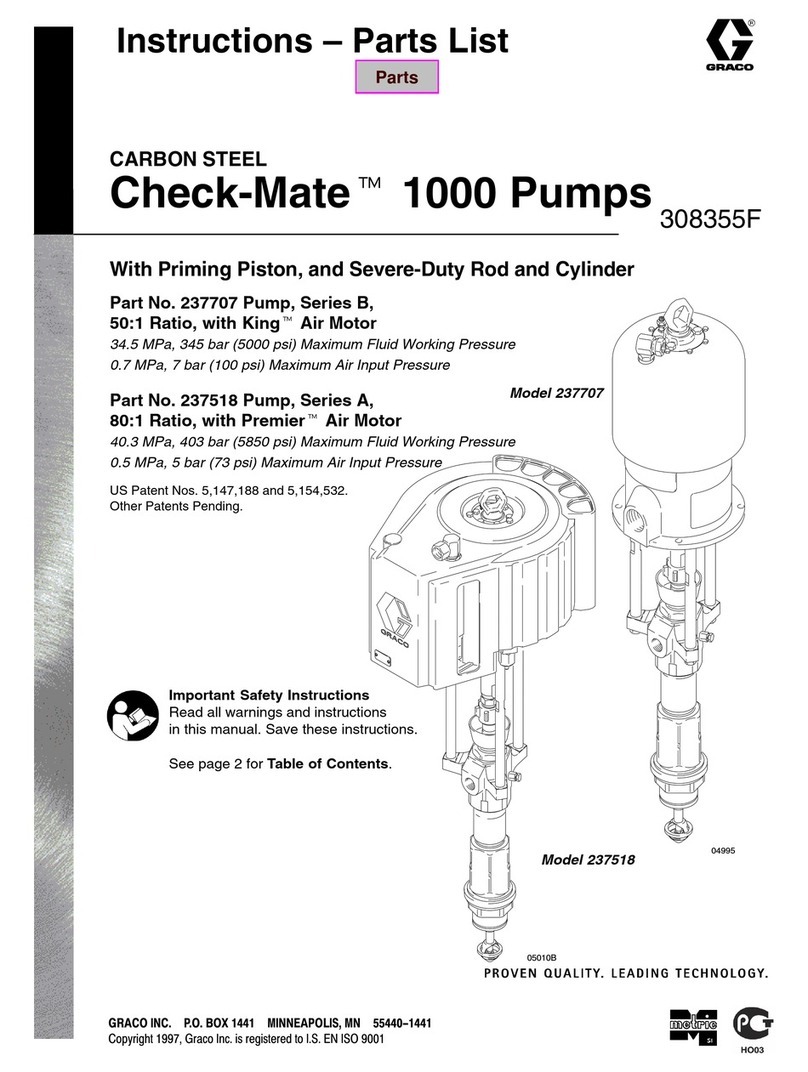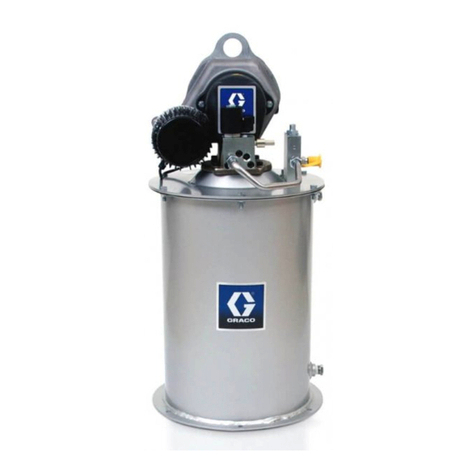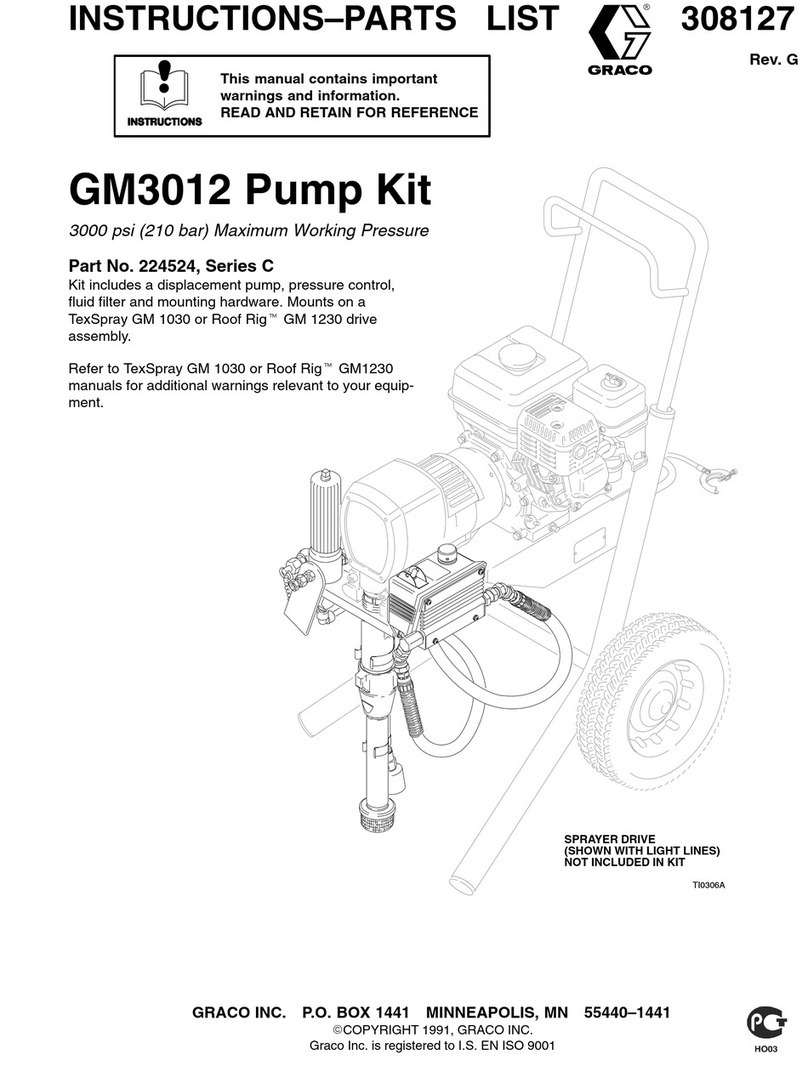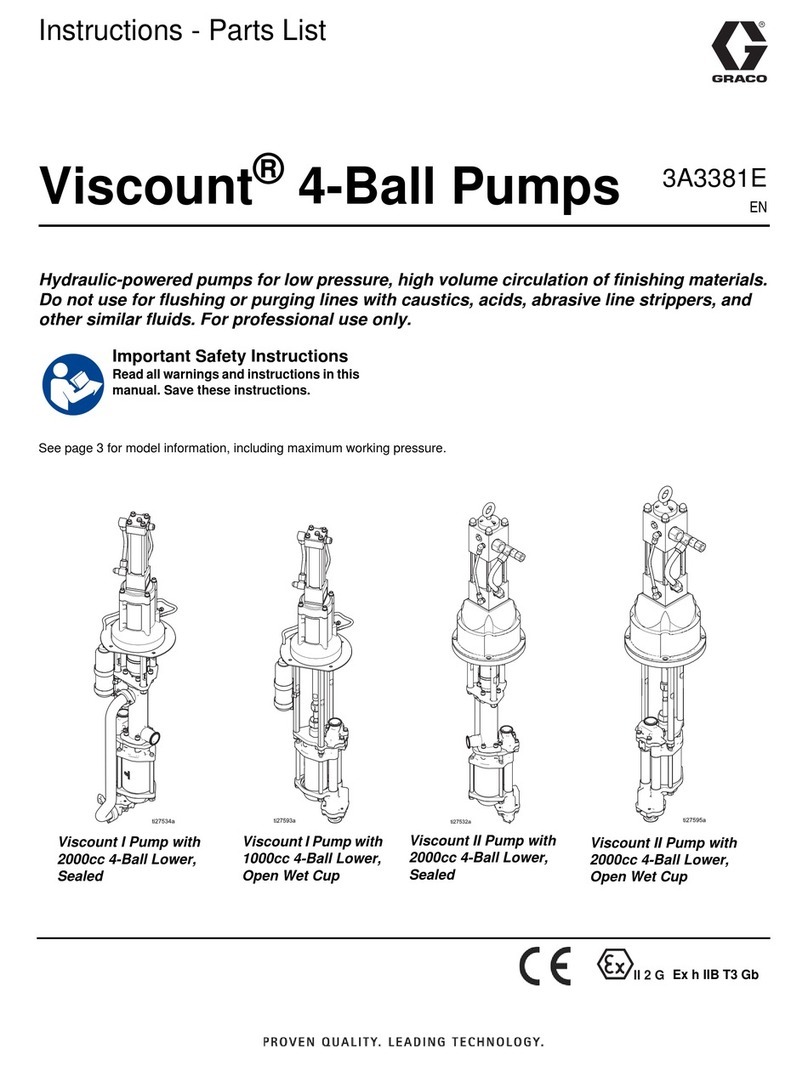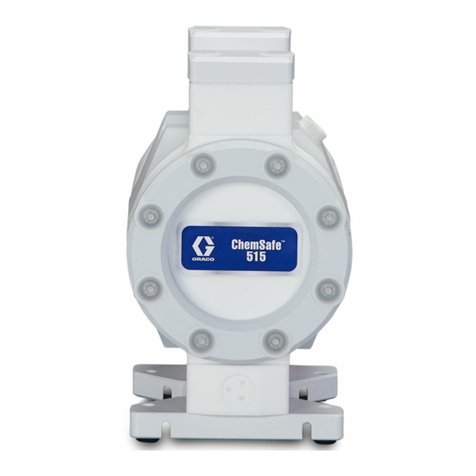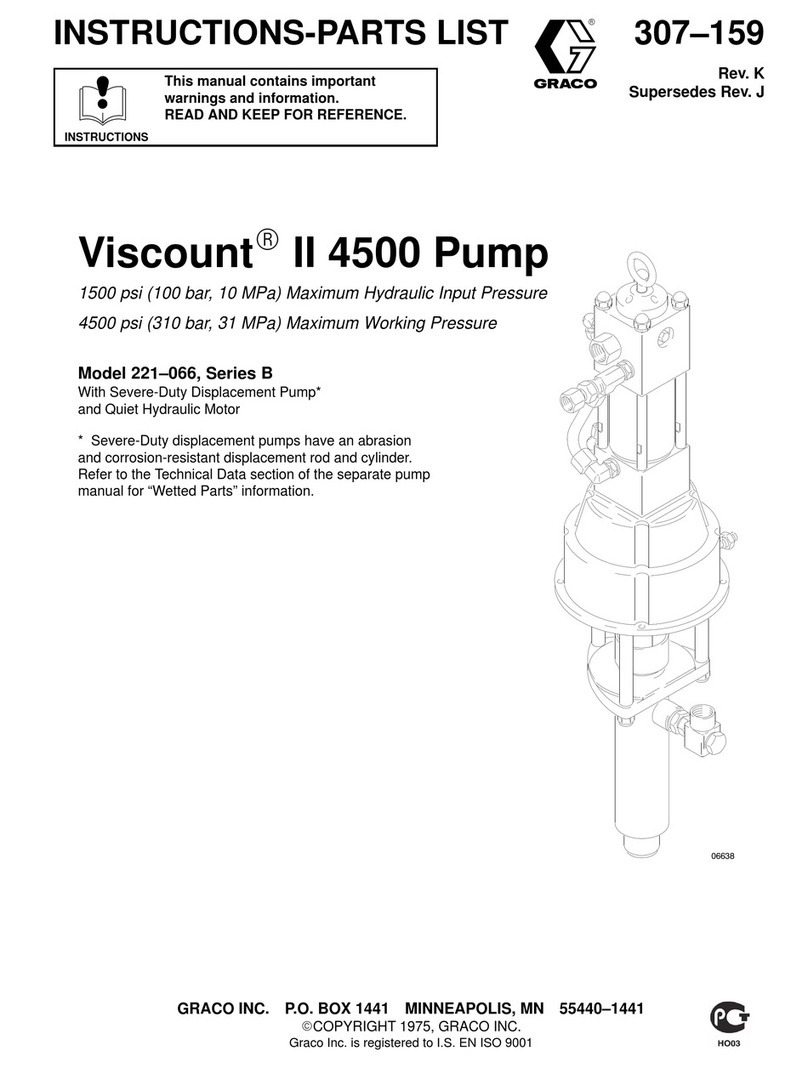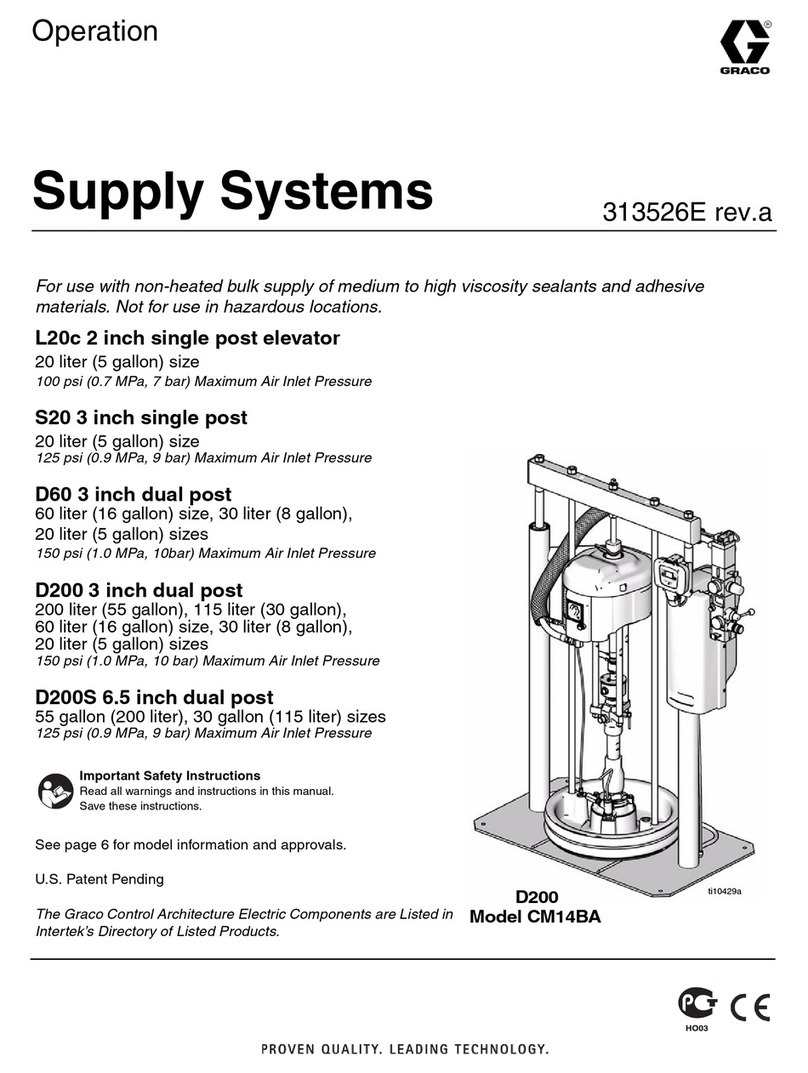
through the pump
and hose.
If
every pan of the spray equip
-
Static electricity is created by the high velocity flow of fluid
ment is not properly grounded. sparking may occur, and the
system may become hazardous. Sparking may also occur
hen plugging
in
or unplugging a power supply cord. Sparks
can ignite fumes from solvents end the fluid being sprayed.
are spraying indoors or outdoors, and can cause
a
fire or ex-
dust particles and other flammable substances, whether you
plosion and serious bodily injury and property damage.
If
you experience any static sparkin or even
a
slight shock
while using this equipment,
S
+
OP SPRAYING
IM-
MEDIATELY. Check the entire system for proper grounding.
Do
not
use the system again
until
the problem has been iden
-
tified and corrected.
Grounding
To reduce the risk of static sparking, ground the pump and all
your local electrical code for detailed grounding instructions
other components used or located
in
the spray area. CHECK
for your area and type of equipment and be sure to ground all
of these components:
1.
Pump:
use ground wire and clamp as shown in Fig 1.
2.
Air and
fluid
hoses: use only grounded hoses with a mex-
imum of
500
feet
(150
m) combined hose lenath
to
en
-
sure grounding continuity. Refer to Hose Giounding
Continuity.
3.
Air compressor: follow air compressor manufacturer's
recommendations.
4.
Spray
gun
or dispensing valve: obtain grounding through
connection to a properly grounded fluid hose and pump.
5. Object being sprayed: according to local code.
6.
Fluid
supply container: according to local code.
7.
All
solvent pails used when flushing, according
to
local
code. Use onlymeralpails. which are conductive. Do not
place the pail on a non
-
conductive surface, such as paper
or cardboard, which interrupts the grounding continuity.
8.
To
minrain grounding continuity when
flushing
orreliev-
ing
pressure, always hold a metal pan of the gun firmly to
the side of e metal pail, then trigger the
gun.
B
A
I
D
F
4
Fig
1
To ground the pump, loosen the grounding
lug
ocknut (A)
and washer (B). lnsen one end of a
12
ga (1.5 mm
I
mmnum
ground wire
IC)
into the slot
in
lug ID1 and tighten locknut
securely. See Fig 1. Connect the other end of the wire to
a
true eanh ground. Refer to page
12
to
order a ground wire and
clamp.
Before flushmg, be sure the entire system and flushing pails
the Pressure Relief Procedure on page
2,
and remove the
are properly grounded. Refer to Groundlng, above. Follow
spray
rip
from the
gun.
Always use the lowest possible fluid
pressure, and maintain firm metal
-
to
-
metal contact between
the gun and the pail during flushing to reduce the risk of fluid
injection injury, static sparking and splashing.
1
"
Flushing
Safety
High pressure fluid
in
the hoses
can
be very dangerous.
If
the HANDLE AND ROUTE HOSES CAREFULLY. DO
not
Pull on
hose develops a leak, split or rupture due to any kind of wear, hoses to move equipment. Do not use fluids or solvents which
damage or misuse, the high pressure spray emitted from
it
can are not compatible
with
the inner tube and cover of the hose.
cause
a
fluid injection injury or other serious bodily injury or DO NOT expose
Grato
hose
to
temperatures above 1m0F
property damage.
(62"'l
or below -4O'F (-4OOCI.
ALL FLUID HOSES MUST HAVE SPRING GUARDS1 The
spring guards help protect the hose from kinks or bends at or
close to the coupling which can result in hose rupture.
TIGHTEN
all
fluid connections securely before each use. High
pressure fluid can dislodge a loose coupling or allow high
pressure spray
to
be emitted from the coupling.
NNER use a damaged hose. Before each use. check entire
hose for cuts, leaks, abrasion, bulging cover, or damage or
movement of the hose couplings. If any of these conditions
exist, replace the hose immediately.
DO
NOT try
to
recouple
high pressure hose or mend
it
with tape or any other device. A
repaired hose cannot contain the high pressure fluid.
Hose
Groundin
Cont!nuity
Proper hose grouncfng contlnulty
I
S
essential
to
maintaining a
grounded spray system. Check the electrical resistance of your
air and fluid hoses at least once
a
week. If your hose does
not
have
a
tag on
it
which specifies the maximum electrical
resistance, contact the hose supplier or manufacturer for the
maximum resistance limits. use a resistance meter in the ap
-
propriate range
for
your hose
to
check the resistance. If the
resistance exceeds the recommended limits, replace
it
im-
your system hazardous. .Also read FIRE
OR
EXPLOSION
mediately. An ungrounded or poorly grounded hose can make
HAZARD, above.
MOVING
PARTS
HAZARD
The piston in the air motor, located behind the air motor removed. KEEP CLEAR of moving parts when staning or
plates, moves when the air is supplied to the motor. Moving operating the pump. Before checking or servicing the pump,
Therefoie, NEVER operate the pump with the air motor plates
pans can pinch or amputate your fingers or other body pans. follow the Pressure Relief Procedure on page
2
to
Prevent
the pump from staning accidentally.
IMPORTANT
ticularly the General Standards, Pan 1910, and the Construction Standards, Pan 1926"should be consulted.
United States Government safety standards have been adopted under the Occupational Safety and Health Act. These standards
-
par.
307
-
619
3
